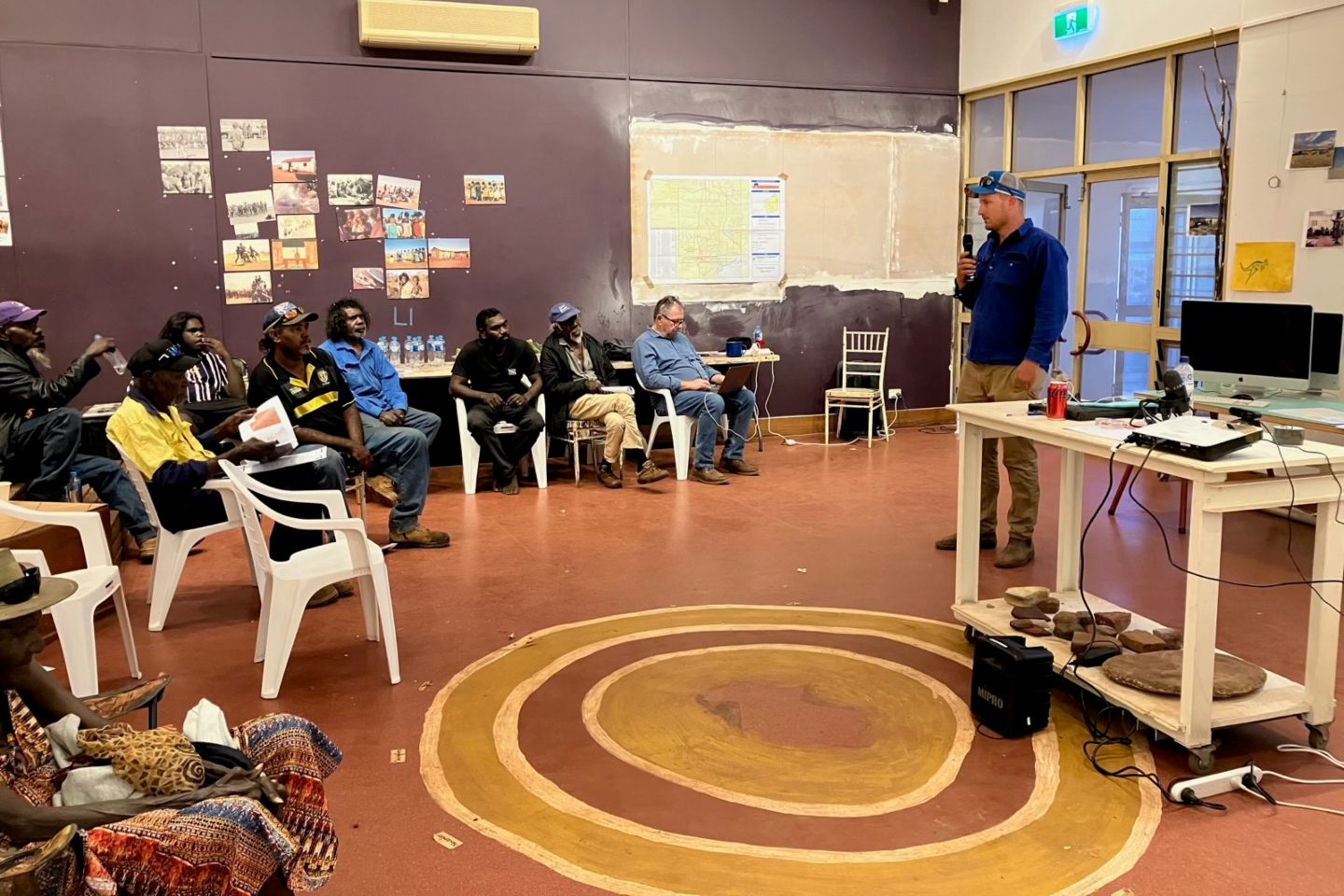The door has been kicked open for Lycaon Resources to start exploring its Stansmore niobium-rare earths project in Western Australia’s West Arunta region after it secured consent from Mines Minister, David Michael. The company says the approval will allow it to start exploration programs, including heritage and gravity surveys and drilling campaigns, on a site designated for the use and benefit of its Aboriginal inhabitants.

The door has been kicked open for Lycaon Resources to start exploring its Stansmore niobium-rare earths project in Western Australia’s West Arunta region after it secured consent from Mines Minister, David Michael.
The company says the approval to mine will allow it to start exploration programs, including heritage and gravity surveys and drilling campaigns, on a site designated for the use and benefit of its Aboriginal inhabitants. The project sits within the Ngaanyatjarra Central Australia Reserve.
The crucial development comes after Lycaon last week secured the tick of approval from WA’s Aboriginal Affairs Minister Tony Buti to kick off exploration at Stansmore – not far from WA1 Resources’ notable niobium discovery.
The process of gaining land access in West Arunta is different from typical access procedures throughout most of WA due to it being an Aboriginal land reserve. Additional approvals and conditions are required, contrasting with accessing Crown land and satisfying the normal native title approvals process.
That makes the West Arunta green light an important first step for the company towards the drilling and exploration of its Stansmore project.
Lycaon Resources technical director Tom Langley said: “Further to the recent approval from the Minister for Aboriginal Affairs, it is pleasing to have received the ‘Consent to Mine’ from the Minister for Mines and Petroleum which now allows us to carry out exploration work programs and organise the necessary heritage clearances ahead of drilling targeted for mid-year.”
Stansmore is known for its classic-style carbonatite target, indicated by its 700m-long oval magnetic anomaly, which is similar to Encounter Resources’ nearby Worsley project and WA1’s discovery at its West Arunta project, about 90km south of Stansmore.
WA1 reported a drill intercept from its Luni discovery of 136m at 0.4 per cent niobium pentoxide and 0.17 per cent total rare earth oxides (TREO). It has then gone on to deliver a plethora of high-grade niobium results from an infill drilling program of 21 reverse-circulation (RC) holes at Luni, which highlight the existence of a broad, shallow, north-east/south-west-orientated niobium zone in the eastern section of the carbonatite.
Its top recent niobium pentoxide intersections include 30m at 4.7 per cent, 25m at 2 per cent, 15m at 3.3 per cent, 16m at 3 per cent, 20m at 2 per cent, 8m at 4.2 per cent and 10m at 2.1 per cent.
Encounter has also previously unveiled an important intercept of 34m at 1 per cent niobium pentoxide and 0.6 per cent TREO from 56m.
Collectively, the new targets and some of the first-ever drilling results from the region reinforce the West Arunta’s status as possibly one of WA’s last frontiers for major critical rare earths and iron oxide-copper-gold (IOCG) discoveries.
Carbonatites are one of the most important sources of niobium and rare earths minerals and host all three of the world’s operating niobium mines. Typically, their formation and minerals suites are driven by alkaline systems.
The sources include Lynas Rare Earths’ Mt Weld niobium-tantalum deposit in WA and the world’s biggest rare earths mine at Bayan Oho in Inner Mongolia. Niobium is one of a suite of commodities flagged by the Australian Government as critical minerals at risk of supply disruption.
Drilling at Stansmore by BHP in 1982 recorded shallow cover in the range of 5m to 10m depth. Later reprocessing of magnetic data in the project area by Southern Geoscience (SGC) highlighted multiple new carbonatite targets identified as being prospective for niobium-rare earths mineralisation.
Further geophysical modelling of 2010 low-level airborne magnetics data by SGC created a 3D inversion plot to assist with the targeting of drillholes ahead of Lycaon’s proposed maiden drilling.
Interestingly, the multiple prospective anomalies identified within the company’s 100 per cent-owned, 173-square-kilometre tenement area – including Volt, Ion, Edi, Earl, Menlo and its key Stansmore prospect – all fall within a distinctive north-west/south-east structural trend that is clearly visible in magnetics extending through a strike distance of 24km within the company’s ground.
Lycaon has a suite of seven maiden drillholes already lined up to plumb the secrets of its Stansmore, Ion and Volt targets, with proposed inclined hole depths ranging from 325m to 400m for a total of 2600m of initial drilling.
The company has already lodged a program of works for its proposed helicopter-assisted drill program, with heritage surveys being planned with the Central Desert Native Title Services for late next month.
Is your ASX-listed company doing something interesting? Contact: matt.birney@businessnews.com.au














